Few can recall a year as disruptive and chaotic as 2020. With the year suffocated by COVID-19 woes, it feels like a lifetime ago we were watching the horrific images emerge from Australia between July 2019 and February 2020, when the 'Black Summer' fires engulfed significant swathes of the country's east and south-west, following one of the hottest and driest 12 months on record.
In total, over 15,000 fires broke out – two of these, in New South Wales, burned more land in the state than any fire season during the last 20 years (Filkov et al 2020) – and 21% of Australia's temperate forests burned (Boer et al 2020), releasing hundreds of millions of tons of carbon (Rathi & Lombrana 2020) and a smoke bubble that was carried more than 10,000 km across the Pacific Ocean to South America. Not only were they extensive (five times more so than the 2019 fires in the Amazon), but they were also exceptionally severe, burning rainforest ecosystems that were previously thought to be impervious to bushfires.
The human impacts are well reported: over AUS $20 bn (£11 bn) of economic damage, 3,000 homes destroyed and 33 direct human fatalities (Filkov et al 2020), with a further 417 estimated to have died from smoke-related illness (Borchers Arriagada et al 2020). But, with such widespread devastation – approximately 30-40 million hectares are estimated to have burnt, including almost 20% of the country's eucalyptus forests (Bowman et al 2020) – devastating impacts on Australia's unique fauna and flora were inevitable. In the short term, food and shelter becomes difficult to find, especially for species with poor dispersal capabilities, while in the long term, the loss of tree hollows and nectar-bearing trees has the potential to impact species for decades. A headline-grabbing claim of 'more than 1 billion animals killed' was popular, although born from a questionable methodology that did not include invertebrates, or account for variation in fire intensity. Of more significance was the impact on populations and their conservation.

South-east Australia, before (left) and after (right) the Black Summer fires in 2019-20 (Geospatial Intelligence).
In a recent study (Ward et al 2020), the impacts of the Black Summer fires on Australia's biodiversity are laid bare. They report that:
'In total, 378 birds, 254 reptiles, 102 frogs, 83 mammals and 15 freshwater fish have habitats overlapped by these fires. Of these 832 taxa, 196 had 10-30% of the Australian extent of their habitat burned, 51 had 30-50% of habitat burned, 16 had 50-80% of habitat burned and 3 had >80% of habitat burned.'
Their data estimate that 27 species of bird (of which 22 are endemic to Australia) had more than a quarter of their habitat overlap with the fires that ravaged for six months (see Table 1). While elucidating the impacts of this must await the collection of more targeted, species-specific data, for some species these habitat losses are likely to translate into similar population declines.
Confined to a small area of highland forest in eastern Australia, Rufous Scrubbird was among the most seriously affected birds. This ultra-elusive, Locustella-like species is – along with its counterpart in Western Australia – among the most evolutionarily distinct passerines in the world, divergent from its closest relatives (the lyrebirds) by 30-35 million years. Already listed as Endangered, principally because of its very small, fragmented range, Ward et al estimate that up to 68% of Rufous Scrubbird habitat may have been burned in the Black Summer fires. Their requirement for a dense humid understorey coupled with poor dispersibility render them extremely vulnerable to bushfires and the Black Summer fires are likely to have severely hampered the long-term conservation of this species.
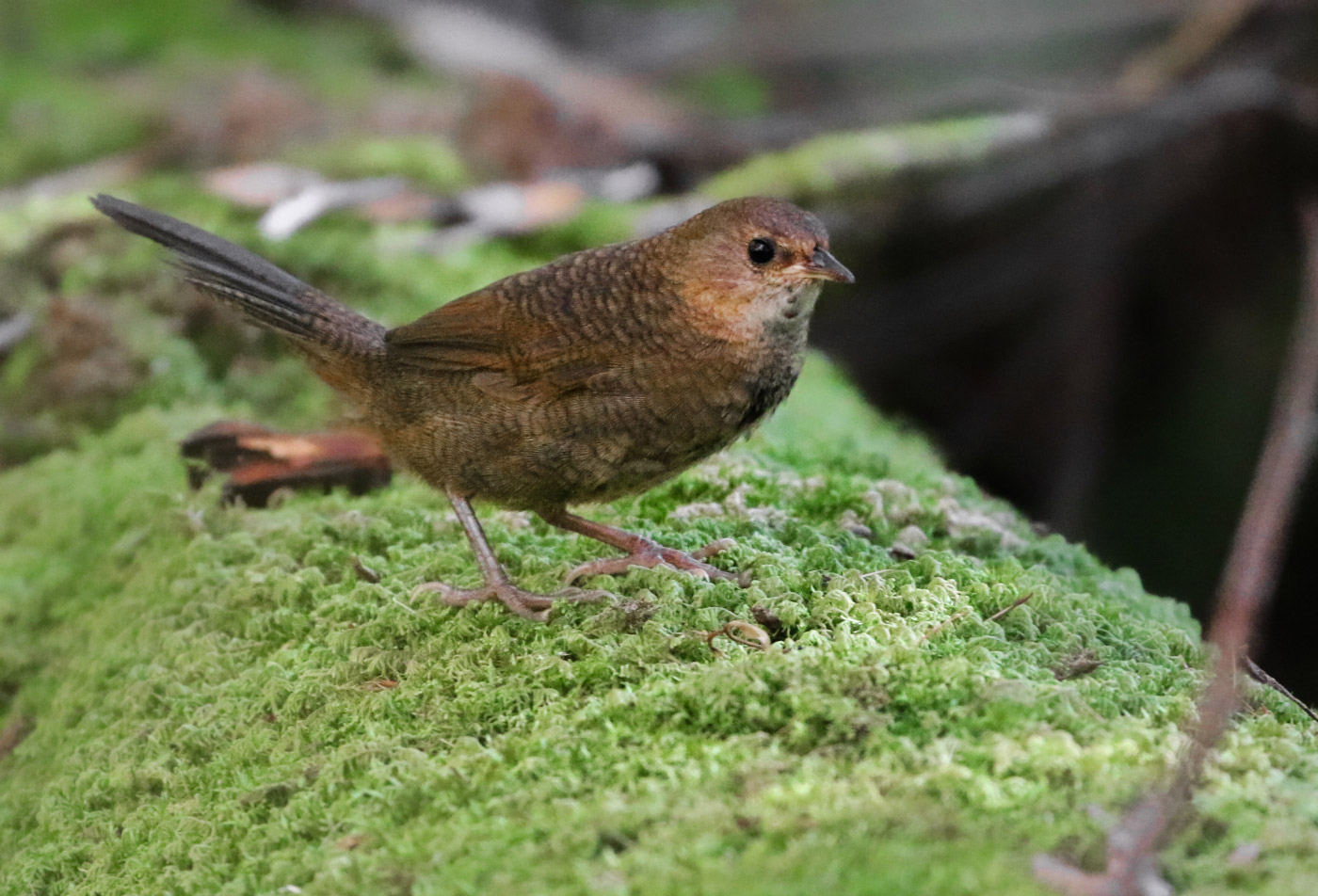
Before the Black Summer fires, the Endangered Rufous Scrubbird was confined to an area smaller than Norfolk; 68% may have since burned (Joshua Bergmark).
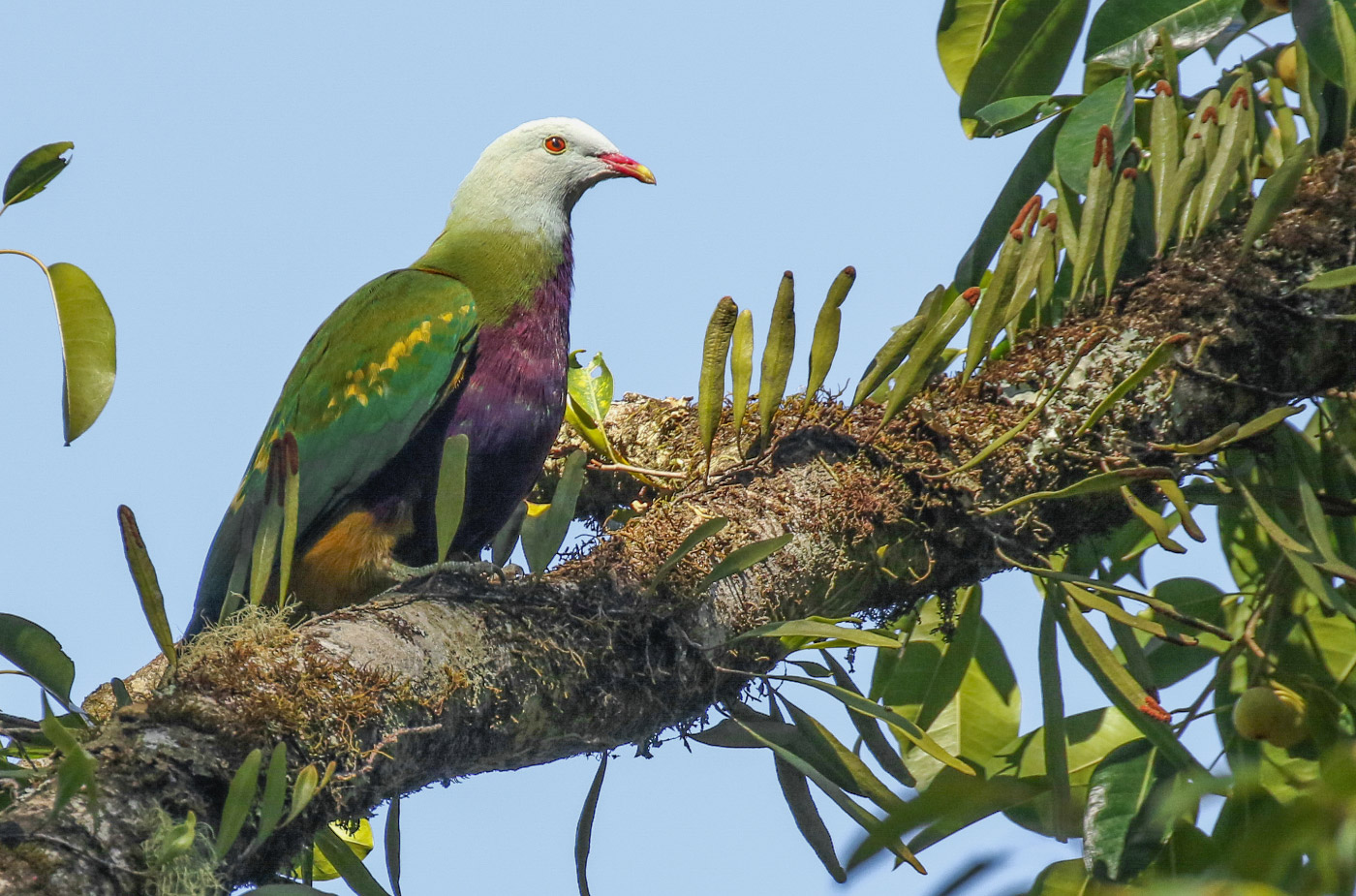
Almost 30% of the magnificent Wompoo Fruit-Dove's range in Australia may have been lost in the fires (Alex Berryman).
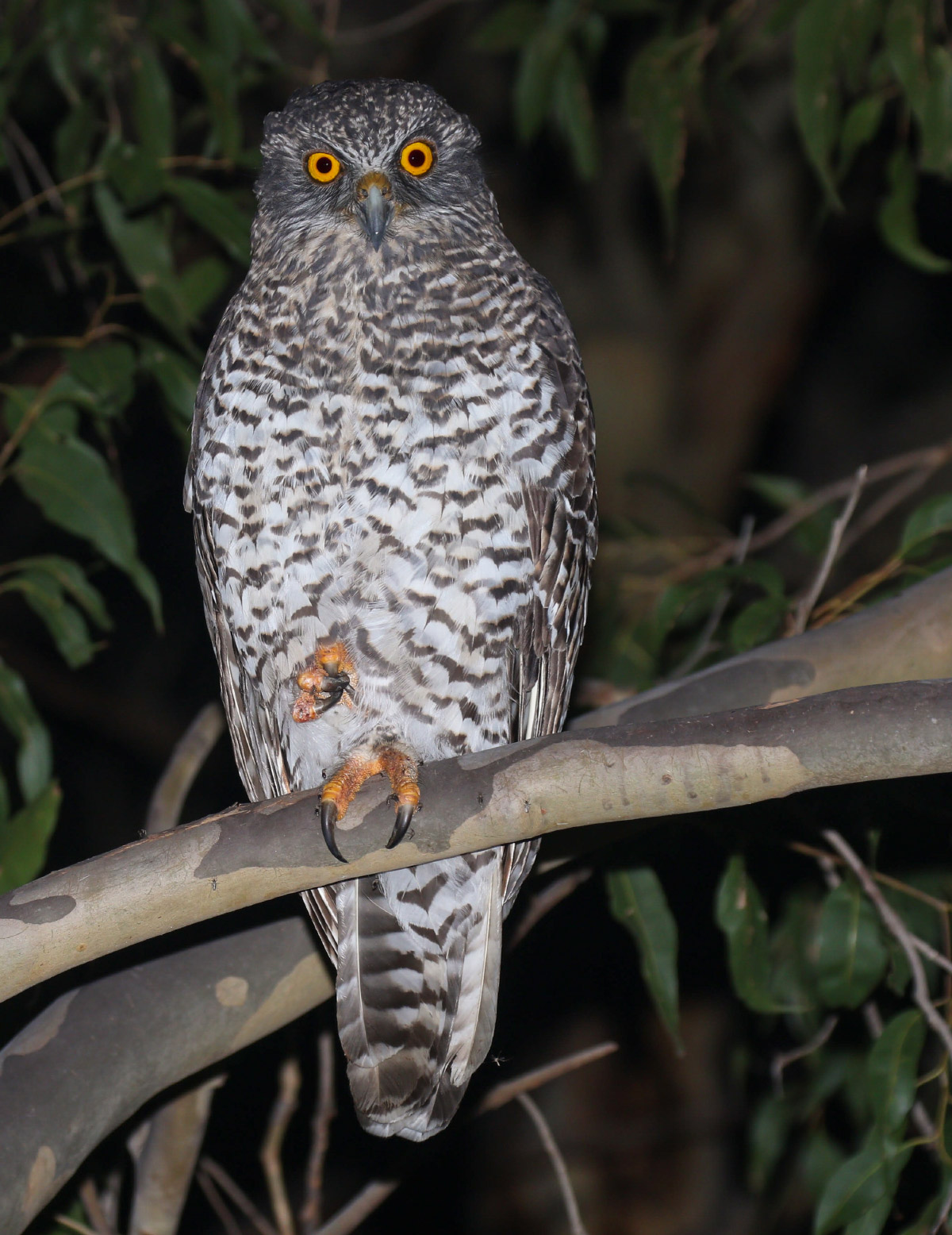
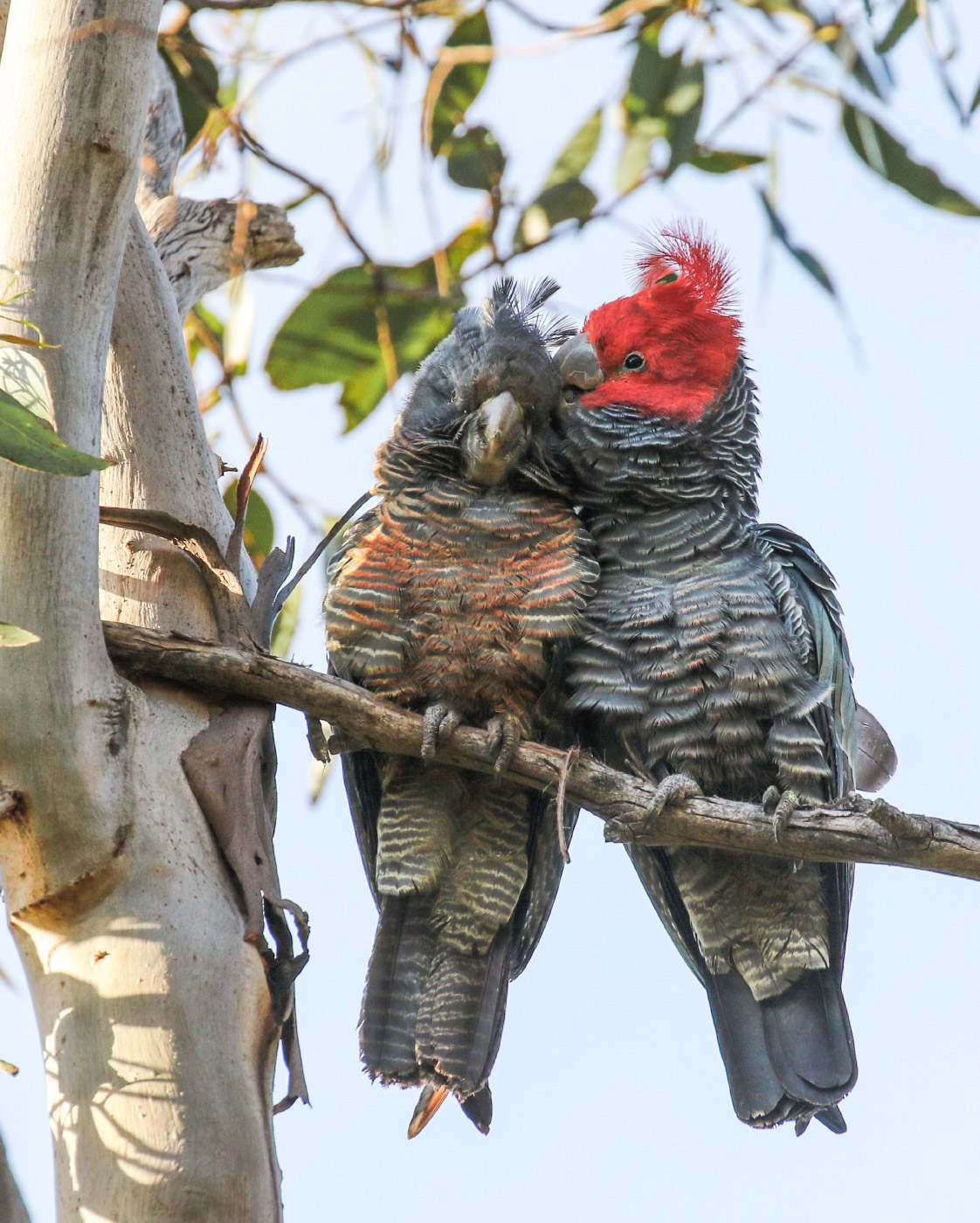
Powerful Owl (top) and Gang-gang Cockatoo are two species largely dependent on old-growth forests with large hollows for nesting; up to a quarter of both these species' habitats burned in the 2019-20 fires (Alex Berryman).
The authors acknowledge that, in many cases, their estimations of habitat burned amount to 'best guesses', and only the collection of targeted data will reveal the fires' true impacts. Mercifully, the 2020-21 bushfire season in Australia is looking nothing like the last. With widespread rains over the winter and a La Niña alert now active, eastern and southern Australia are expected to experience a wetter-than-average spring and early summer. Nonetheless, the science is unequivocal: this situation will get worse. Numerous studies, too plentiful to list individually here, are clear that projected climate change will make wildfires in Australia more frequent and severe, a fact somewhat irreconcilable with the government's continued coal-focused energy policies. Australia already has the unenviable title of the world's highest mammal extinction rate (Woinarski et al 2015), and with so many bird species impacted, from one bushfire season, for decades to come, it's hard to be optimistic for the country's avifauna.
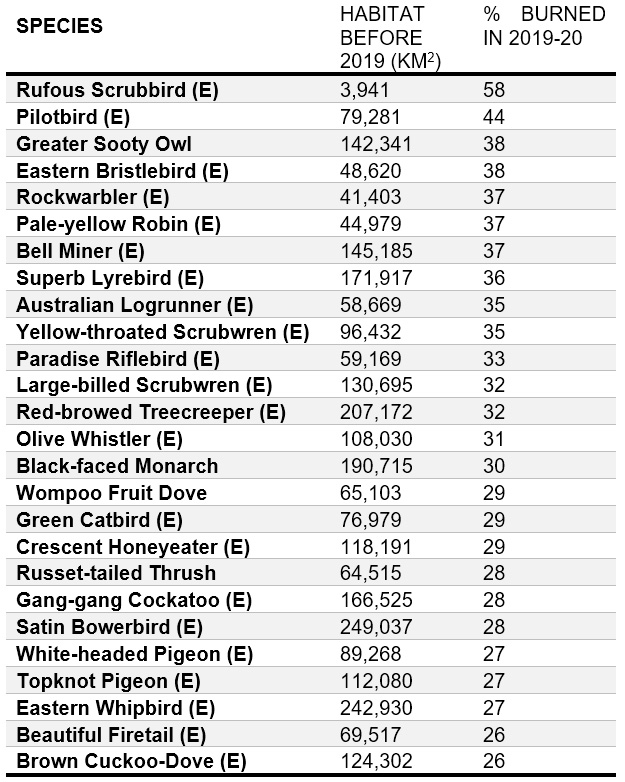
Table 1: Bird species estimated to have more than a quarter of their habitat in the 2019-2020 'Black Summer' fires in Australia. Data from Ward et al (2020); (E) = endemic to Australia.
References
Boer, M M, Resco de Dios, V, Bradstock, R A. 2020. Unprecedented burn area of Australian mega forest fires. Nat Clim Chang 10, 171–172.
Borchers Arriagada, A, Palmer, A J, Bowman, D M, Morgan, G G, Jalaludin, B B, Johnston, F H. 2020. Unprecedented smoke-related health burden associated with the 2019-20 bushfires in eastern Australia. Med J Aust 10.5694/mja2.5054510.5694/mja2.50545
Bureau of Meteorology. Annual climate statement 2019. Availabe online: http://www.bom.gov.au/climate/current/annual/aus/#tabs=Overview (accessed on 8 November 2020).
Filkov, A, Ngo, T, Matthews, S, Telfer, S, Penman, T. 2020. Impact of Australia's catastrophic 2019/20 bushfire season on communities and environment. Retrospective analysis and current trends. J Safety Sci Resil 1(1): 44-56.
Haslem, A et al. 2012. Time-since-fire and inter-fire interval influence hollow availability for fauna in a fire-prone system. Biol Conserv 152: 212–221.
Rathi, A, Lombrana, L M. Australia's Fires Likely Emitted as Much Carbon as All Planes. Availabe online: https://www.bloomberg.com/news/articles/2020-01-21/australia-wildfires-cause-greenhouse-gas-emissions-to-double (accessed on 5 November 2020).
Ward, M, Tulloch, A, Radford, J, Williams, B, Reside, A, Macdonald, S, Mayfield, H, Maron, M, Possingham, H, Vine, S, O'Connor, J, Massingham, E, Greenville, A., Woinarski, J., Garnett, S., Lintermans, M., Scheele, B., Carwardine, J., Nimmo, D., Lindenmayer, D, Kooyman, R, Simmonds, J, Sonter, L, and Watson, J. 2020. Impact of 2019-2020 mega-fires on Australian fauna habitat. Nature Ecology & Evolution 4(10): 1321-1326.
Woinarski, J C Z, Burbidge, A A, Harrison, P L. 2015. Ongoing unraveling of a continental fauna: decline and extinction of Australian mammals since European settlement. Proc Natl Acad Sci USA 112: 4531-4540.

